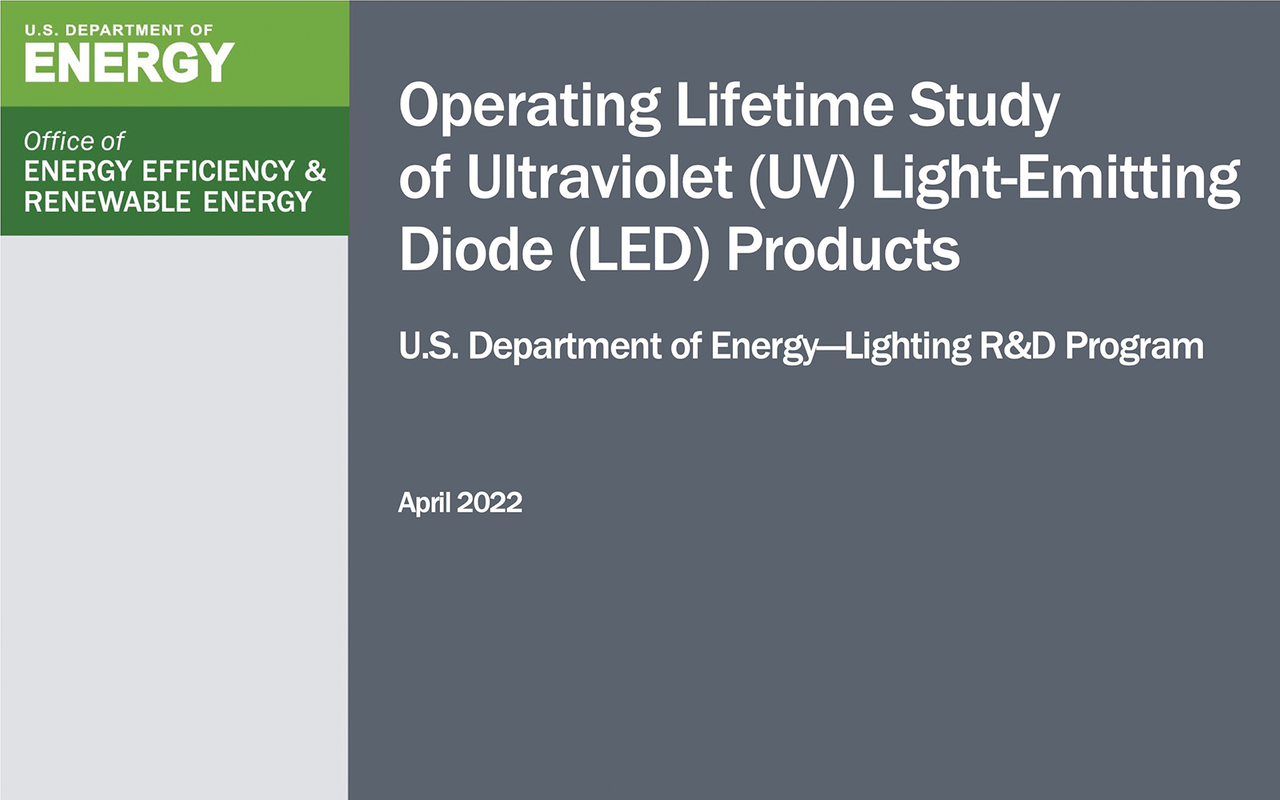DOE Reports Examine the State of Current Commercial UV LEDs
The COVID-19 pandemic has put a spotlight on germicidal ultraviolet (GUV) radiation for air and surface disinfection. This technology area represents a growing opportunity to improve indoor air quality while saving energy over high-ventilation approaches.
However, light-emitting diode (LED) GUV sources and fixtures available today have low efficiencies relative to visible LEDs or other UV sources (such as mercury lamps). Driven by demand for pandemic preparedness measures in buildings and good indoor air quality, many emerging GUV R&D activities target application effectiveness through increased source efficiency, improved fixture design, and enhanced reliability.
The U.S. Department of Energy has released two reports aimed at understanding the current state and viability of commercial ultraviolet (UV) LED products. RTI International conducted these studies through a contract with KeyLogic Systems, working with the LED Systems Reliability Consortium (LSRC).
- Initial Benchmarks of UV LEDs and Comparisons with White LEDs focuses on the construction and initial performance of commercially available UV LED components in radiometric and current-voltage tests. A test matrix containing 13 different UV LEDs was created in association with the LSRC. Testing involved at least 22 samples of each commercially available product (as of June 2021). In addition, two common, commercial white LEDs were tested to provide a benchmark against blue-pumped white LEDs. Read the report.
- Operating Lifetime Study of UV LED Products focuses on the long-term performance and reliability of the same set of commercially available UV LEDs. Understanding the failure modes and failure rates of UV LEDs is important in understanding GUV product effectiveness over time and improving UV product reliability at the LED, lamp, and luminaire level. This information is critical to developing products with higher efficiency, lower carbon footprint, and significantly reduced environmental impact than the lighting technologies they replace. The study employed three stress tests to examine the reliability of each product. Results from stress testing, along with an extensive literature review, identified specific failure mechanisms across these UV LEDs. Read the report.
"This critical work moves our industry's knowledge forward in an emerging area," said Kevin Benner, Lead Research Engineer for Current, who was not involved in the RTI studies. "As was true in the early days of white-light LEDs, it is important for LED manufacturers, equipment engineers, and end users to have access to this information in order for them to aid in proper deployment as the technology evolves."
© 2022 Luger Research e.U. – Institute for Innovation & Technology

